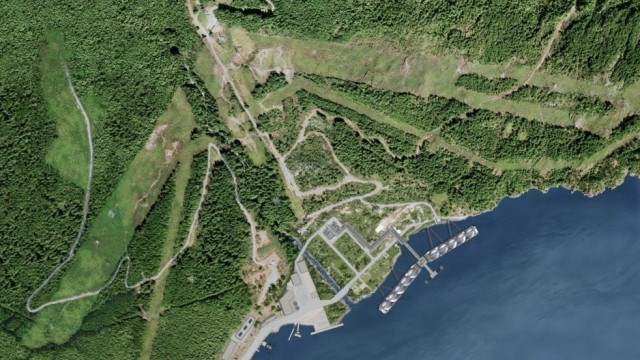Britain’s BP Plc has sewn up all of Woodfibre LNG’s future offtake capacity, Woodfibre LNG announced September 5.
Through BP Gas Marketing Limited (BPGM), the British oil and gas giant has inked a third LNG Sales and Purchase Agreement with Woodfibre LNG, which is in early stages of construction of its LNG plant in Squamish.
Woodfibre LNG is scheduled to begin construction this month and operations will begin in 2027.
In total, BPGM will buy 1.9 million tonnes annually of LNG. Woodfibre LNG was designed to produce 2.1 million tonnes annually, so there will not be much left over for spot sales, and Woodfibre LNG will give BPGM an additional 0.45 million tonnes per annum over a 15-year period on a free-on-board basis.
“Today's announcement demonstrates there is demand for lower-carbon energy today and well into the future," Woodfibre LNG president Christine Kennedy said in a press release.
"We look forward to working with BPGM as the offtaker from the Woodfibre LNG project to deliver Canadian LNG from one of the lowest carbon intensive LNG export facilities in the world,” Ratnesh Bedi, president of Pacific Energy, said in a press release.
Pacific Energy, previously known as Pacific Oil & Gas Ltd., is the Singapore-based company behind the Woodfibre LNG project. Enbridge Inc. also now owns a 30 per cent stake in the Woodfibre LNG project.
"As a leader in the energy transition and partner in the Woodfibre LNG Project, Enbridge is pleased with today's announcement,” said Cynthia Hansen, Enbridge’s executive vice president and president of Gas Transmission and Midstream. “Woodfibre LNG will play an important role in providing global LNG markets with a safe, secure and sustainable source of natural gas produced by one of the lowest emission LNG facilities in the world.”
Woodfibre LNG's lower carbon intensity comes in part from its design, which will use electric drive for the chilling process rather than burn natural gas. It is also the first industrial project in Canada to recognize a non-treaty Indigenous government, Squamish Nation, as a full environmental regulator.



